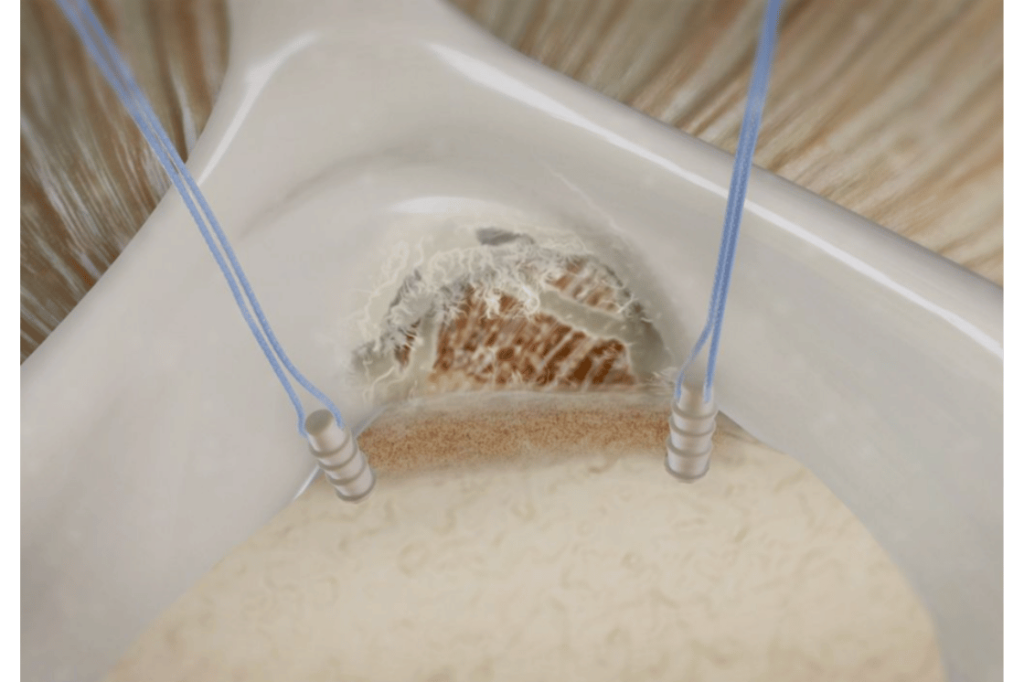A SLAP lesion describes a tear in the upper (superior) part of the cartilaginous ring in the shoulder joint called the “labrum.” The term SLAP is an acronym for “Superior Labrum Anterior to Posterior,” which indicates that the tear extends from the front (anterior) to the back (posterior) of the upper labrum. Damage to this structure can cause pain during shoulder movements, a catching or locking sensation, weakness, and discomfort, especially when lifting or rotating the arm.
SLAP tears are commonly seen in athletes who perform repetitive overhead motions (such as volleyball, swimming, baseball, and weightlifting) or in individuals who have experienced trauma. They can also develop from a fall onto the shoulder, a sudden forceful pulling of the arm, or while lifting a heavy object.
Diagnosis is typically made through a clinical examination, imaging methods such as MRI (Magnetic Resonance Imaging), and, if necessary, an arthroscopic evaluation (a minimally invasive surgical procedure to view the joint). In cases where SLAP tears are small and do not cause symptoms, they may be monitored with conservative treatment (non-surgical options). However, surgical treatment becomes an option when pain and loss of function persist.

SLAP repair is a procedure to reattach the torn labrum tissue to the bone using special surgical sutures (threads). This operation is performed arthroscopically (a minimally invasive “keyhole” method). The shoulder joint is accessed through small incisions, allowing the lesion to be seen clearly, and the labrum tissue is stitched back into place. If necessary, accompanying biceps tendon problems can also be treated during the same session, such as with a biceps tenodesis (re-anchoring the tendon) or tenotomy (releasing the tendon).
The post-operative rehabilitation process is crucial. For the first 4 weeks, the shoulder is protected with a sling. Following this, physical therapy is initiated to restore the shoulder’s range of motion and muscle strength. After a successful repair, patients can safely return to sports, work, and daily life activities.

Surgery Duration: 45–60 minutes
Type of Anesthesia: General anesthesia + nerve block (optional)
Surgical Method: Closed (arthroscopic) method, with 3–4 mm incisions
First day: 4–5 (2–3 if a nerve block is performed)
First week: 3
After the 2nd week: 1–2
A hospital stay of 1 night is generally required
First 4 weeks: A sling is used, and the shoulder is rested.
Starting from the 5th week: Passive movements begin.
6–8th week: Active movement and strengthening exercises.
3rd month: Return to daily activities.
4–6th month: Return to sports and strenuous effort.
First dressing change: 2nd day
Wound check: 1st week
Suture removal (if applicable): 10th day
Yes. After a successful surgery and physical therapy, you can safely return to sports activities. A return to non-contact sports is recommended at 3 months, and to contact sports at 5–6 months.
If the biceps tendon is worn or damaged, a “biceps tenodesis” (re-anchoring the tendon) or “tenotomy” (releasing the tendon) procedure may be performed during the surgery. This can speed up recovery and reduce pain. Depending on your condition, a biceps tenodesis might even be a better option for you than a repair.
A nerve block can be administered for pain control. Generally, the pain is mild to moderate and can be managed with painkillers.
In patients who are compliant with their exercises, shoulder range of motion and strength are largely restored. Permanent restriction is rare.
For the first 2-3 weeks, the shoulder is protected with a sling while standing. It can be removed while sleeping or when sitting down during the day in a position where you can rest your elbow.